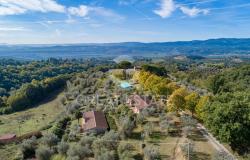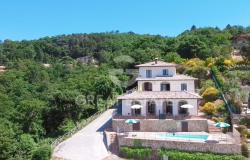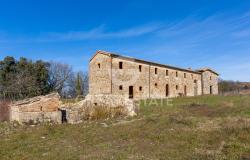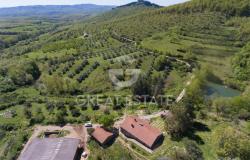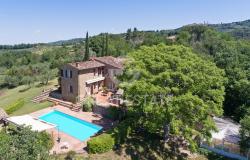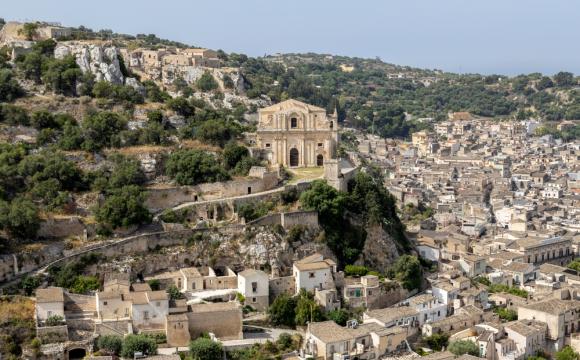Nestled in the Valnerina, (Valley of the Nera) between the mountains of Sant'Angelo and Gabbio lies the Umbrian village of Ferentillo, above the seventy square kilometre hamlet are the castles of Precetto and Matterella, facing each other as if in a defiant, permanent stand off as they look down upon the village.
Both castles are worthy of a visit; Matterella for its imposing bell tower and the nearby church of Santa Maria where priceless works of Renaissance art including, Piermatteo Piergili’s The Miracle of St. Thomas are on display and the triangular shaped, Precetto with its pentagonal tower. But it’s not these great fortresses that draw tourists to the area, it’s something quite unexpected and somewhat macabre.
The unimpressive looking church of Santo Stefano has a secret, a secret it’s yet to reveal, for beneath it is a mystery that remains unsolved.
Buried beneath this 15th century church, built upon a previous 12th century church are the mummified remains of the deceased who were interred there. Some of the mummies date as far back as four-centuries ago with the latest inhabitant being from the 19th century. The mystery that shrouds the church is, how did the bodies became mummified?
One view is that the air beneath the church contained a particular type of micro-organism that was solely responsible for mummification; another is that the combination of minerals in the earth, a micro-fungus and the air that travels through the crypt from openings along one wall.
Attached to the church is the Museo delle Mummie, (Museum of the Mummies) and most visitors who choose to visit are possibly less interested in the mystery and more in their own morbid curiosity.
Above the door a sign (picture above) reads, “Oggi a me, domani a te. Io fui quel che tu sei tu sarai quel che io sono. Pensa mortal, che il tuo fine è questo, e pensa pur che ciò sarà ben presto’. (Today me, tomorrow you. I was what you are and you will be what I am. Consider, mortal, that your end is this and consider also that it will be quite soon). It’s hardly a cheery welcome, but an ideal verse for setting the scene for what awaits the visitor.
Inside several of the better preserved mummies are on display, and upon closer inspection it is possible to see hair, intact teeth and beards, while some are still clothed in their burial garments.
Behind glass are several other interesting exhibits. A baby lies beside its mother and other children are on display. One case contains a small group of Chinese pilgrims; their deaths another mystery. Contained in another cabinet is the body of a lawyer who was murdered and adjacent to this is his killer.
Also on display are partial frescoes from the original church and two mummified birds that were buried as part of an experiment, (or possibly by sceptics) and exhumed twelve-months later in an attempt to solve the riddle of the preservation process.
To visit: Follow signs for ‘Le Mummie’, the ticket office is situated and easily found in a street just below the church and the entrance fee is €3,00.
Opening Hours
April - September, 9:00 to 12:30 and 2:30 to 7:30.
March and October, 9:30 to 12:30 and 2:30 to 6:00.
November – February, 10:00 to 12:30 and 2:30 to 5:00.

